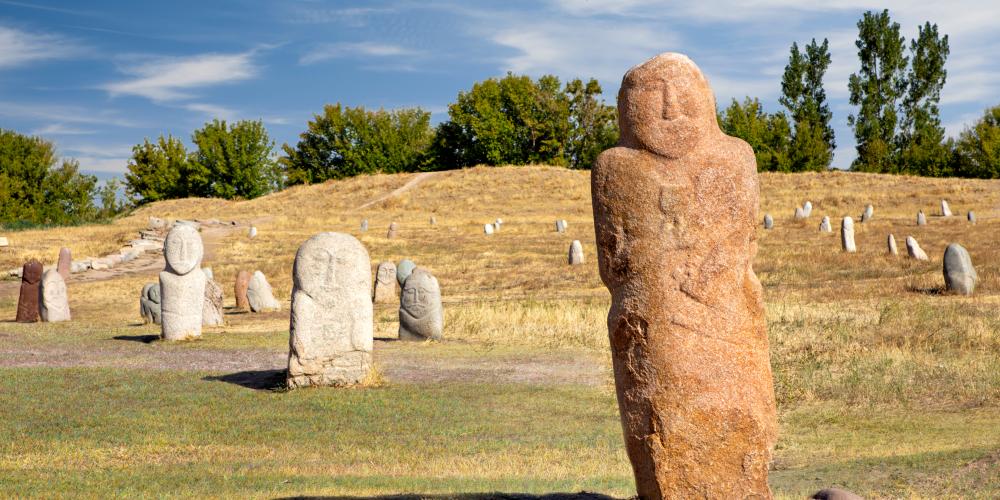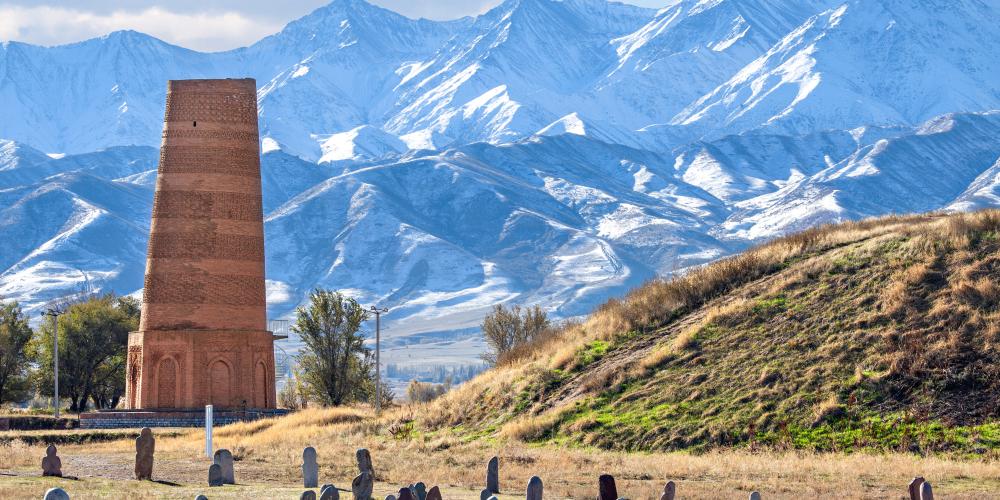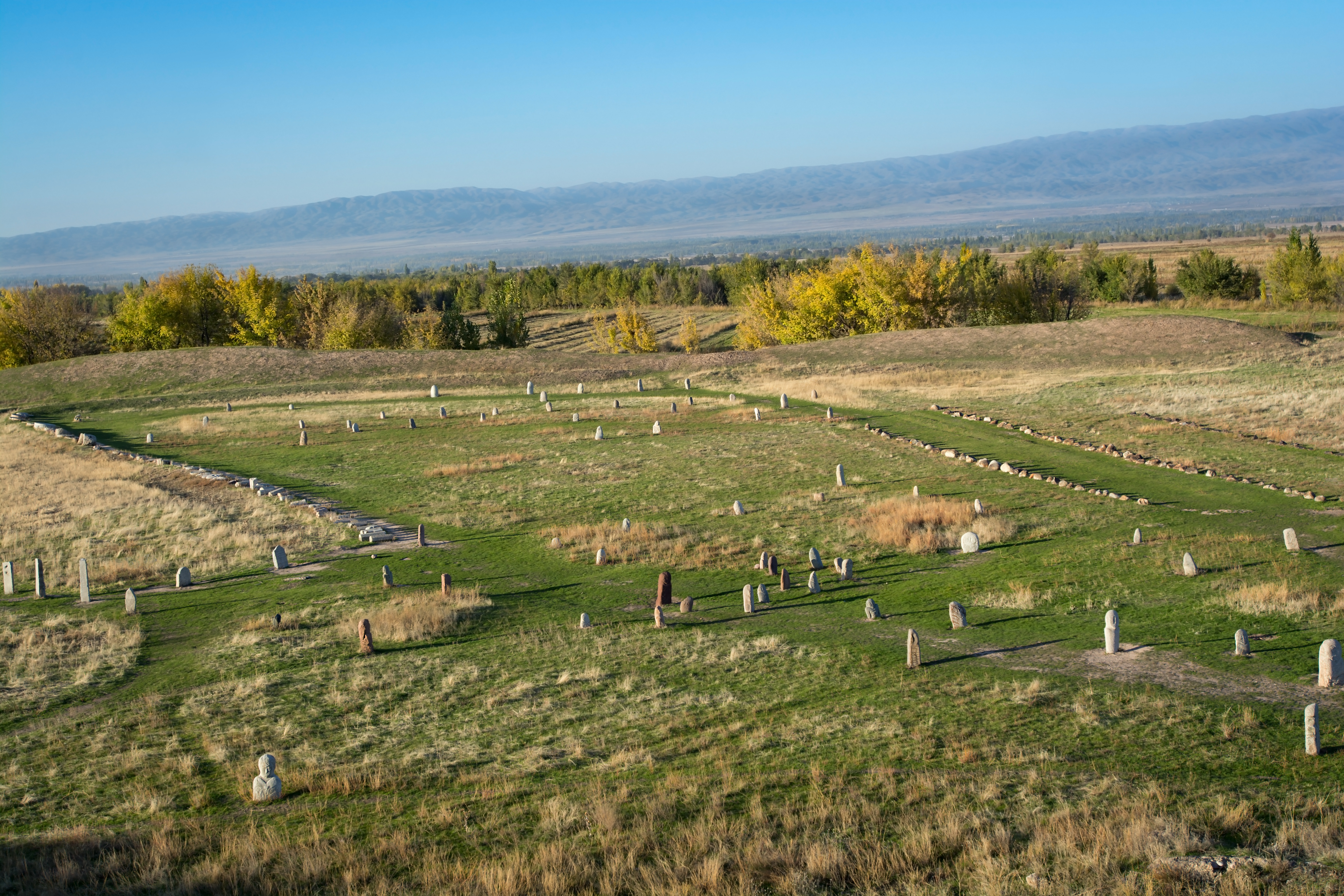Kyrgyzstan Settlements - Silk Roads: The Routes Network of Chang’an Tianshan Corridor

Imagine walking down a road, coming across people along the way, and everyone you meet has something new and exciting to offer - different clothes, new foods, stories from distant lands. This is what travelling the Silk Road would have been like millennia ago, when traders traversed these paths as early as the 2nd century BC.
The Chang’an Tianshan Corridor is an excellent example of a physical space that has morphed into a cultural icon. There are 33 recognised sites in the corridor: 22 in China, 8 in Kazakhstan, and 3 in Kyrgyzstan. Through changing landscapes, religious buildings, and remnants of cities once at the centre of the world, this corridor preserves the legacy of the ancient Silk Road. Moving along route allows you the opportunity to walk through the most transformative crossroads in history.

The views vary from breathtaking green landscapes to desert oases. Expect to pass many beautiful villages and old religious sites along the way, with each one just as fascinating as the last. Massive sculptures can also be seen along the way, particularly relating to Buddhism. Religion is key when exploring the Silk Road, as it has led heavily to the influences we see today in Asia. The corridor shows the transition of Buddhism in the east and the Chinese imperial government as well. Now, the Chang’an Tianshan Corridor is credited with being one of the largest spreaders of culture, economics, and philosophy in the Asia region at that time.
On the Kyrgyz portion of the Chang’an Tianshan Corridor, there are three settlements that were particularly critical for the operation of the Silk Road. These are the City of Suyab where you can find the ancient site of Ak-Beshim; City of Balasagun, home to the site of Burana; and City of Nevaket, which hosts the site of Krasnaya Rechka. The three settlements are located a driving distance from each other and can make a nice day-trip from Bishkek, Kyrgyzstan’s capital city.
Between them all, the Chuy Valley is one of the most beautiful landscapes in Kyrgyzstan and a must visit for any tourist in the country. With the dramatic backdrop of snow-capped mountains, learn about the history of these unique sites, that have been of extreme importance for the Kyrgyz people for centuries.
City of Suyab (Site of Ak-Beshim)
The ancient settlement of Ak-Beshim, modern day name for the city of Suyab, was once one of the most important stops along the Silk Road. Due to its strategic position, the city grew in commercial and military value, becoming a well-known stop for travellers and merchants aiming to reach China. Its position on the Silk Road made Suyab a sought-after destination for many dynasties who all tried to take control of the city. These days, it is possible to notice the presence of different dynasties and tribes who lived in the city on its archaeological remains. The sites include ruins of Chinese-style fortresses, Zoroastrian burial spaces, Buddhist statues, and a Christian church.
Learn more about Suyab in this informative video
City of Balasagun (Site of Burana)
The empty landscape surrounding Burana Tower makes it hard to imagine that more than a thousand years ago this place was one of the largest urban centres in Central Asia, under the name of the city of Balasagun. Under the rule of the Kharakanid Empire, Balasagun was thriving as one of the first Muslim settlements in Central Asia. In fact, Burana Tower was originally built to serve as a minaret, tall enough to be used as a spot for the prayer calls. In the 11th century, when Balasagun was a busy city, the tower stood up to 40 metres tall (much more imposing than today’s 24 metres). The tower got shorter over the years due to a number of earthquakes.
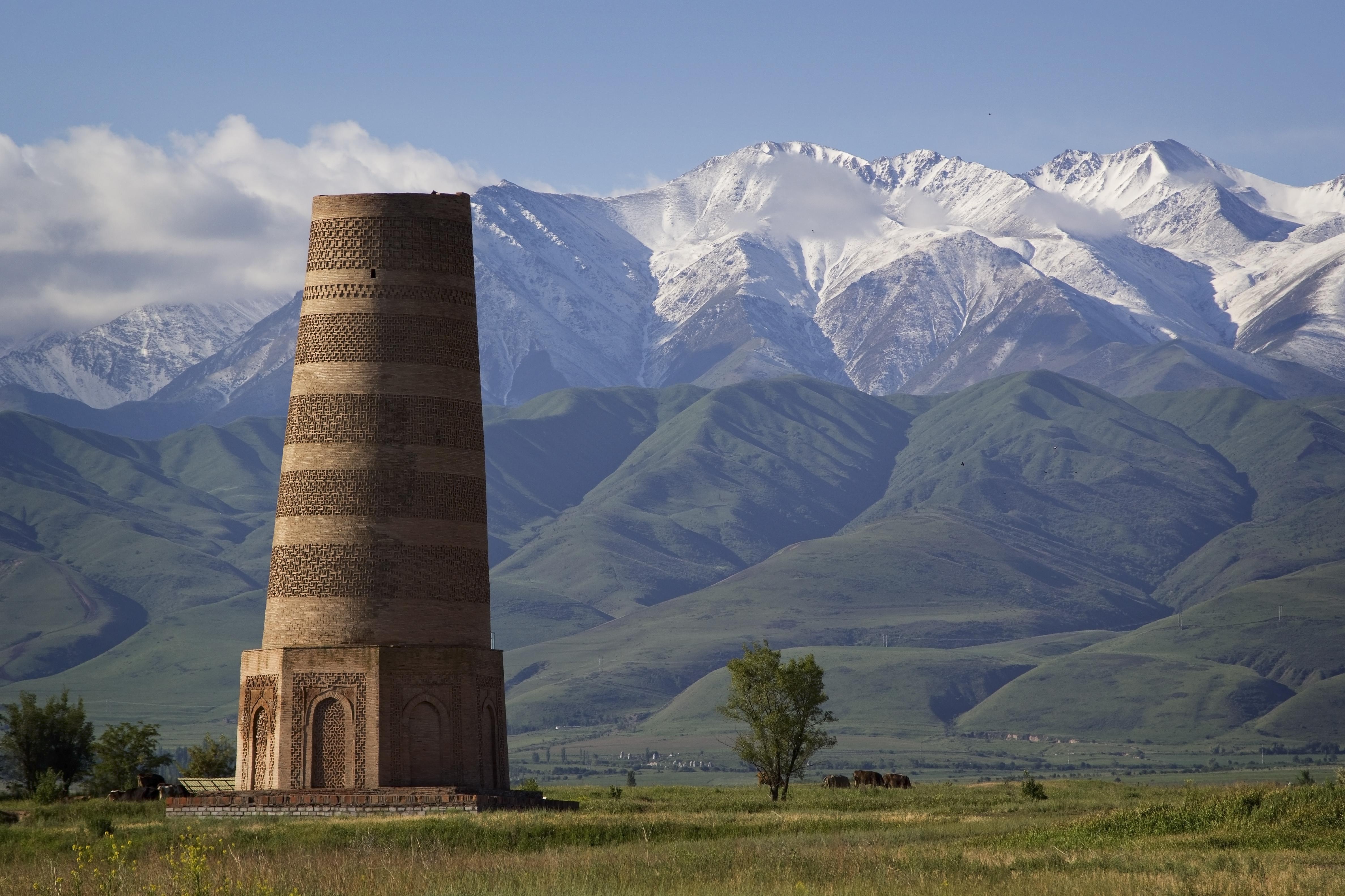
Today, in the archeological site of Burana, visitors can attempt to grasp how big the city was by looking at the very few ruins that are left on the site. It was believed that Balasagun was quite advanced for its time, with its own sewerage and irrigation system and more than 200 mosques. The site also has peculiar empty stone graves called Balbals. These stone graves were collected from other cemeteries and brought to Balasagun. Now they serve as an interesting feature for the site as the graves were carved to resemble their deceased owners.
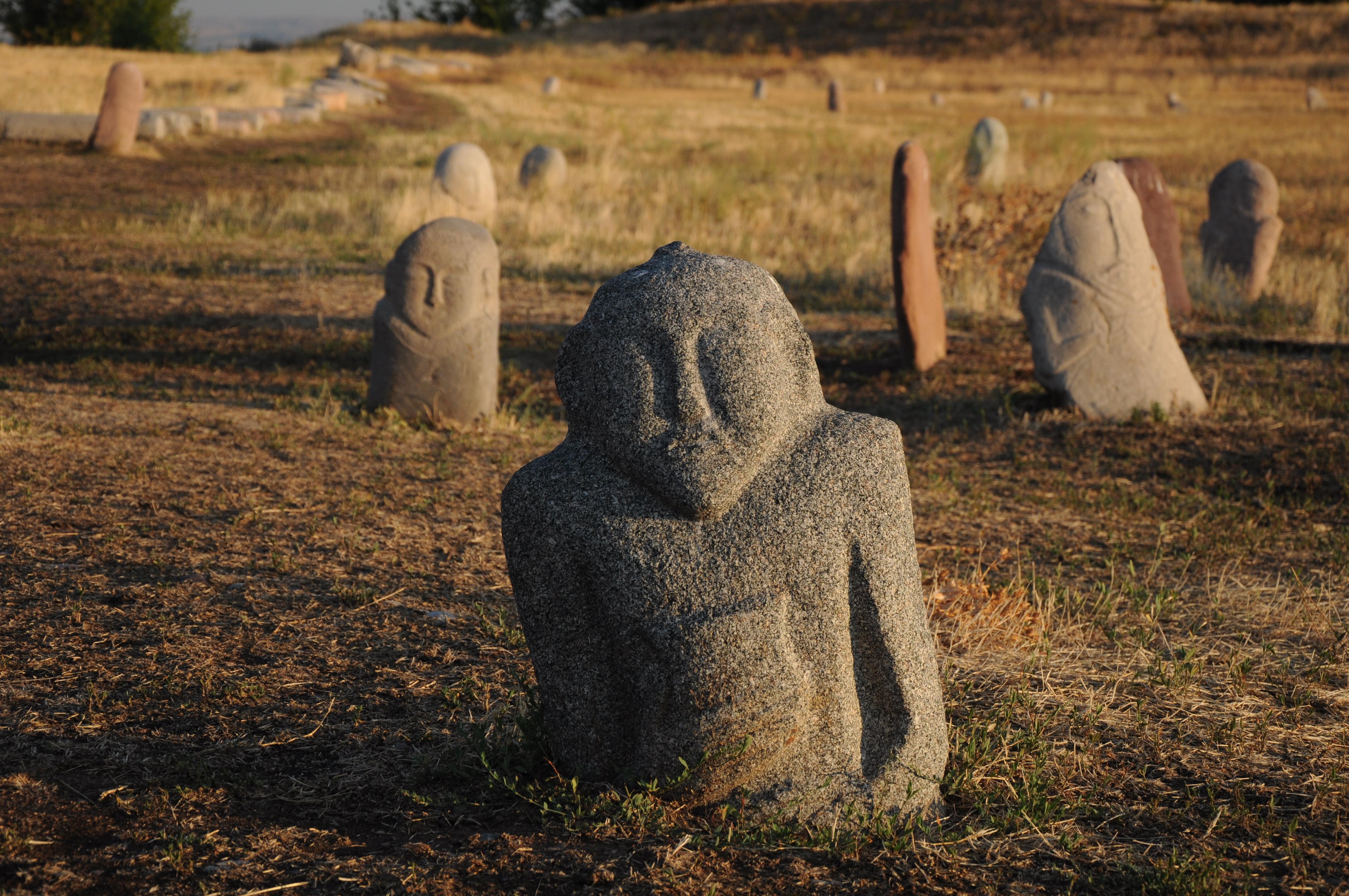
When visiting Burana, make sure to appreciate the rock engraved details around the tower as it served as inspiration to the mosque’s tower in Bukhara, one of the most beautiful in Central Asia. Also make sure to climb up the tower and admire the vast fertile lands of the Chuy Valley with the mountainous landscape of the northern Tianshan in the background.
City of Nevaket (Site of Krasnaya Rechka)
Much like Ak-Beshim, Krasnaya Rechka is a testimony to the multicultural past of the Silk Road. The site, which was known as the city of Nevaket in ancient times, displays the ruins and artefacts from different civilisations, dynasties, tribes, and faiths. This is the biggest of the three sites described here, accounting for an impressive 400 hectares of land. Unfortunately, archaeologists have not yet been able to explore all the land and have only unveiled parts of the city.
So far, the excavations on the city have revealed evidence of a fortress that used to surround the politically-important citadel and the city suburbs that lay outside the walls of the fortress. Nevaket was also known as one of the capitals of the Kharakanid Empire and one of the centres of Islam during its early days in Central Asia. Nevertheless, the site displays evidence of how different cultures and faiths co-lived with harmony, as excavations were able to unveil Christian and Buddhist temples as well as Zoroastrian burial grounds.
Experience the raw beauty of the Silk Road along this stretch of the Chang’an Tianshan Corridor. This is a great way to learn about the regional influences, and just how much the Silk Road impacts Asia today through long-lasting cultural heritage and an incomparable taste for trade.
How to get there
Leaving from the Capital city, Bishkek, tourists can easily find day trips to the Chuy Valley that includes the mentioned attractions. It takes around one hour to reach the first site by car. If visitors do not wish to partake in a group tour you can always arrange private transportation by taxi or with a tour operator.
When to visit
May through September the weather is most temperate in Kyrgyzstan making the visit more pleasant and allowing the tourists to book hikes through the Chuy Valley. This is also the time when the local bazaars are bursting with people selling all kinds of things.
How to Visit
Guided tours are offered online through various sites and tour operators. The advantage of this is to be educated whilst you are exploring the area, so you can fully soak in the history! Booking a guided tour is also convenient for navigating through the sites as the roads of Kyrgyzstan might be a bit confusing for foreign visitors. You can easily book a day trip in main urban centres such as Osh or Bishkek.
